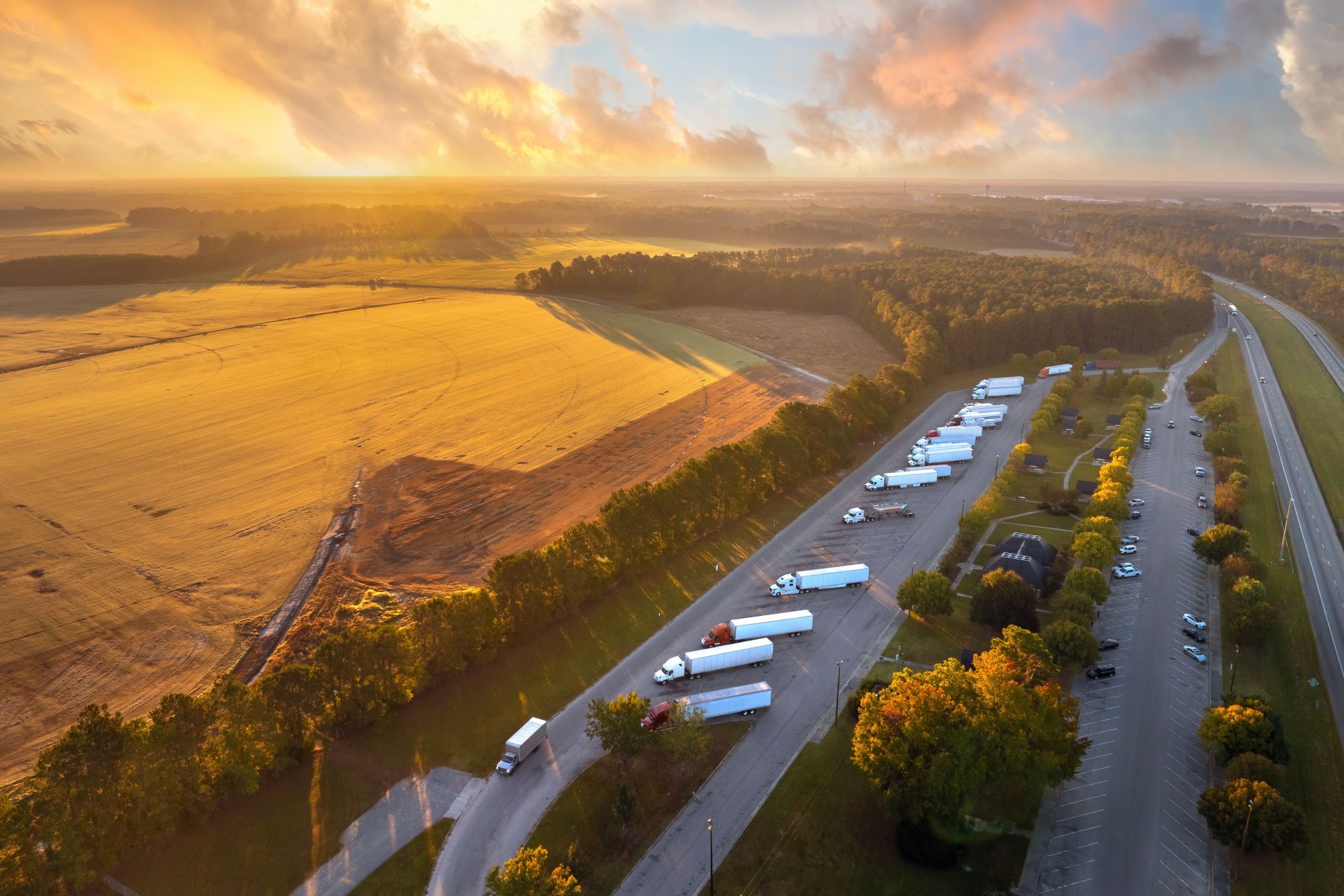
Guest
Як стати водієм вантажівки
Створено: 26.09.2025
•
Оновлено: 26.09.2025
Попит на професійних водіїв вантажівок в Європі ще ніколи не був таким високим. У Великій Британії, за оцінками Асоціації автомобільних перевезень, протягом наступних п'яти років знадобиться [200 000 нових водіїв вантажівок] (https://www.rha.uk.net/news/news/detail/rha-report-200-000-hgv-drivers-needed-in-next-5-years), щоб підтримувати ланцюги поставок у робочому стані. Така ж ситуація спостерігається в більшості країн Європи. За даними Міжнародного союзу автомобільного транспорту (https://routinguk.descartes.com/resources/report-warns-of-european-shortage-of-hgv-drivers), у 2024 році в Європі налічувалося 426 000 незаповнених вакансій водіїв.
Але це створює можливості. Як [ми раніше досліджували] (https://snapacc.com/newsroom/is-logistics-a-new-alternative-to-further-education-for-school-leavers/), галузь автоперевезень пропонує перспективу стабільної роботи для випускників шкіл, які розглядають альтернативи університету, та дорослих, які хочуть перекваліфікуватися. Робота водієм вантажівки - це шлях до стабільного заробітку та структурованої кар'єри.
Багато хто задається питанням: як стати водієм вантажівки? Відповідь залежить не лише від навчання та ліцензії, але й від розуміння того, що означає долучитися до професії, яка забезпечує рух європейської економіки.
Хто може стати водієм вантажівки?
Однією з головних переваг кар'єри водія є її доступність. Для початку вам не потрібна вища освіта або роки спеціальної підготовки; стандартні водійські права (категорія В) - це все, що потрібно для того, щоб працювати над підвищенням професійної кваліфікації.
Мінімальний вік для навчання становить 18 років як у Великій Британії, так і в усьому ЄС, а це означає, що випускники шкіл можуть одразу перейти від отримання водійських прав до професійної підготовки водіїв вантажівок. Тим не менш, багато фірм вважають за краще, щоб водії-міжнародники були не молодше 21 року, враховуючи додаткову відповідальність, яка приходить з перевезеннями на далекі відстані.
Медична придатність також важлива. Кожен заявник повинен пройти медичний огляд перед тим, як отримати посвідчення водія вантажівок. У Великій Британії це включає низку тестів, в тому числі перевірку зору, вимірювання артеріального тиску та скринінг на такі захворювання, як епілепсія, хвороби серця або апное сну.
Європейські країни застосовують однакові медичні стандарти, які регулярно оновлюються, щоб водії залишалися здоровими протягом усієї своєї кар'єри.
Скільки заробляє водій вантажівки?
Для багатьох людей, які розглядають можливість професійного водіння, ключовим питанням є: скільки заробляють водії вантажівок?
Відповідь залежить від місця розташування, досвіду та типу виконуваної роботи, але по всій Європі ця професія пропонує конкурентоспроможну заробітну плату порівняно з іншими роботами початкового рівня.
Новий водій у Великій Британії зазвичай починає з зарплати близько 27 000 фунтів стерлінгів на рік. Ті, хто переходить на роботу на далекі відстані, особливо на міжнародні маршрути, можуть отримати зарплату до 45 000 фунтів стерлінгів - іноді більше, якщо вони перевозять спеціалізовані або небезпечні вантажі. ті, хто працює зі спеціалізованими вантажами, небезпечними вантажами або працює через кордон.
В [Іспанії] (https://www.salaryexpert.com/salary/job/truck-driver/spain) зарплати, як правило, нижчі, ніж у Великій Британії, і становлять близько 36 600 євро, хоча великі логістичні фірми у великих містах можуть пропонувати більше.
● [Польща] (https://pln.currencyrate.today/convert/amount-92400-to-eur.html) останніми роками спостерігається високий попит на водіїв, але заробітна плата залишається скромною, в середньому близько 92 400 злотих (приблизно 21 690 євро).
[Румунія] (https://www.erieri.com/salary/job/heavy-truck-driver/romania#:~:text=Salary%20Recap,and%20anonymous%20employees%20in%20Romania.) знаходиться на нижньому кінці шкали, де водії зазвичай заробляють 80 550 RON (16 000 євро), хоча міжнародні контракти на перевезення можуть значно підвищити зарплату на руки.
Звісно, зарплата - це ще не все. Багато компаній пропонують оплату понаднормових, надбавки на харчування або бонуси за виконання планових показників доставки. А оскільки попит на водіїв не зменшується, ця робота також забезпечує рівень безпеки, з яким мало хто може зрівнятися в кар'єрі на початковому рівні.
Яке посвідчення водія вантажівки мені потрібне?
Перш ніж ви зможете сісти за кермо вантажівки, вам знадобляться відповідні права. У Великобританії це означає перехід від стандартних автомобільних прав до того, що офіційно називається ліцензією на керування великовантажним транспортним засобом (LGV) або великовантажним транспортним засобом (HGV). Ці терміни часто використовуються як взаємозамінні, але обидва охоплюють однакові категорії професійного водіння.
Деякі починають з ліцензії категорії C1, яка охоплює середні транспортні засоби вагою від 3,5 до 7,5 тонн - часто використовується для невеликих вантажівок доставки.
Однак більшість водіїв-початківців одразу отримують права категорії С, які іноді називають правами класу 2 для вантажівок. Це дозволяє керувати жорсткими транспортними засобами вагою понад 7,5 тонн. Для тих, хто хоче перейти до керування зчленованими вантажівками - більшими транспортними засобами, які зазвичай використовуються на міжміських та міжнародних маршрутах, - потрібна ліцензія категорії CE (клас 1).
Поряд з цими кваліфікаціями існує Сертифікат професійної компетентності водія (CPC), що є законодавчою вимогою як у Великій Британії, так і в ЄС. Цей сертифікат включає в себе поєднання початкової підготовки та періодичного підвищення кваліфікації, покликаного тримати водіїв в курсі останніх новин про безпеку, правила та дорожні навички.
Ця система відображає загальноєвропейську систему ліцензування. Основні відмінності між країнами полягають у провайдерах навчання, вартості навчання та, подекуди, наявності місць для проведення іспитів.

Як отримати посвідчення водія вантажного автомобіля
Отримання водійських прав - це перший крок до професійного водіння. У Великій Британії ви можете розпочати цей процес, якщо у вас є стандартні водійські права категорії B. Після цього ви подаєте заяву на отримання тимчасового посвідчення водія вантажівки, яке дозволяє вам почати навчання на великих вантажних автомобілях.
Сама підготовка поєднує в собі теоретичні та практичні елементи: аудиторні заняття з безпеки дорожнього руху та правил, а потім водіння під наглядом на великовантажних автомобілях. Кандидати також повинні пройти модулі для отримання Свідоцтва професійної компетентності водія (CPC), яке гарантує, що водії будуть підготовлені не лише до безпечного керування транспортними засобами, але й до повсякденних вимог, пов'язаних з перевезеннями.
Скільки коштує навчання на водія вантажівки?
Одне з найпоширеніших питань для тих, хто розглядає цю кар'єру, - скільки коштує навчання водіїв вантажівок. У Великій Британії ціни варіюються в залежності від постачальника послуг, місця проведення курсу і того, чи ви навчаєтесь на категорію C або на більш складну категорію CE. В середньому, нові водії можуть розраховувати витратити від 2 000 до 3 500 фунтів стерлінгів на медичні огляди, оплату тимчасових ліцензій, теоретичні тести, практичні заняття, модулі CPC та фінальний іспит з водіння. Деякі компанії, особливо великі логістичні фірми, пропонують схеми субсидування або повного фінансування навчання в обмін на зобов'язання щодо роботи, що робить маршрут більш доступним.
В інших країнах Європи цифри не надто відрізняються. В Іспанії навчання зазвичай коштує від €2,000 до €3,000 за повну підготовку та сертифікацію. У Польщі ця цифра нижча, в середньому від 1 500 до 2 500 євро. У Румунії вартість навчання є однією з найнижчих у Європі: багато кандидатів платять від 1000 до 1800 євро за навчання, хоча заробітна плата на початковому рівні, як правило, відображає цей нижчий бар'єр для входу на ринок праці.
Скільки часу потрібно, щоб стати водієм вантажівки?
Час, необхідний для отримання кваліфікації водія вантажівки, залежить від місця навчання, типу ліцензії, яку ви прагнете отримати, і від того, як швидко ви зможете знайти дати іспитів. У Великій Британії більшість людей завершують навчання і складають іспити протягом двох-чотирьох місяців. Деякі інтенсивні курси скорочують цей процес до кількох тижнів, хоча багато водіїв вважають, що розподіл уроків на частини допомагає їм ефективніше засвоювати навички.
В Іспанії та Польщі процес схожий, хоча довгі черги на іспити можуть подовжити терміни. У Польщі високий попит на професійних водіїв створив вузькі місця в навчальних центрах, а це означає, що деякі кандидати чекають кілька місяців, перш ніж скласти практичний іспит. Румунія має один з найшвидших шляхів, де навчання і тестування часто завершуються протягом восьми-дванадцяти тижнів.
І навчання не припиняється після отримання посвідчення водія. Кожен професійний водій повинен проходити 35-годинний курс CPC кожні п'ять років, щоб підтримувати свої навички в актуальному стані та бути готовим до новітніх правил і стандартів безпеки.
Скільки часу водій вантажівки може керувати автомобілем?
Після того, як ви отримаєте відповідну кваліфікацію, робота передбачає суворі обмеження щодо часу, який ви можете провести за кермом. Ці обмеження покликані захистити як водіїв, так і інших учасників дорожнього руху, зменшуючи втому.
У Великій Британії та ЄС діють однакові правила. Водії можуть проводити за кермом максимум дев'ять годин на день, що може бути збільшено до десяти годин двічі на тиждень. Щотижневі ліміти обмежують водіння 56 годинами, але не більше 90 годин протягом двох тижнів поспіль.
Водій також повинен робити перерву щонайменше на 45 хвилин після 4,5 годин водіння. Вони також мають право на щоденні та щотижневі періоди відпочинку, щоб відновити сили перед поверненням до роботи.
Ці правила ретельно контролюються за допомогою тахографів, встановлених у транспортних засобах для обліку робочого часу та забезпечення їх дотримання. Для тих, хто працює на міжміських маршрутах, наприклад, для іспанських водіїв, які перетинають Піренейський півострів, або польських перевізників, які перевозять товари через східні кордони ЄС, ці обмеження формують ритм роботи. Вони визначають, коли і де водії зупиняються, роблячи доступ до безпечних і захищених зон відпочинку життєво важливою частиною робочого дня.
Початок роботи водієм вантажівки
Стати водієм вантажівки - це не просто скласти тести. Це крок до ролі, яка несе реальну відповідальність, але також приносить довгострокові можливості. З правильними правами, належною підготовкою та рішучістю взяти на себе відповідальність за життя на дорозі, ця кар'єра може забезпечити як стабільність, так і просування по кар'єрних сходах.
У SNAP ми знаємо, як виглядають ці подорожі. Саме тому ми працюємо з автопарками та водіями по всій Європі, щоб зробити їх безпечнішими, простішими та комфортнішими - від безпечних парковок та кращих побутових умов до розумних цифрових інструментів, які заощаджують час та зменшують стрес. Незалежно від того, чи ви тільки починаєте, чи маєте багаторічний стаж водіння, ми готові підтримати вас на кожній милі шляху.
Завантажте [intruck app] (https://intruckapp.com/download/) вже сьогодні, щоб знайти надійні парковки, заклади та послуги, куди б ви не прямували.



